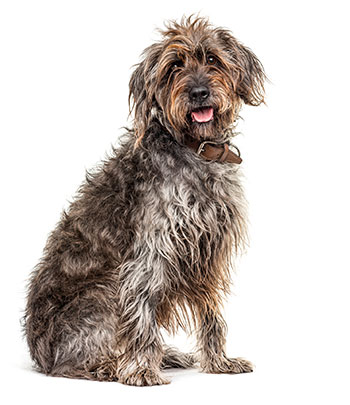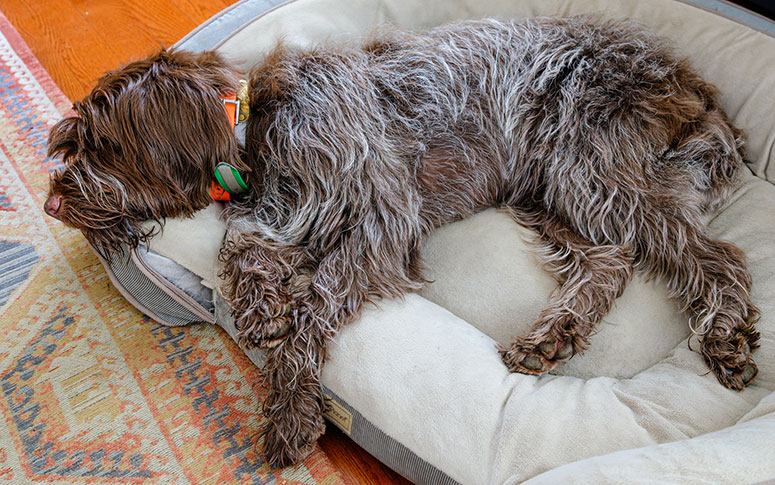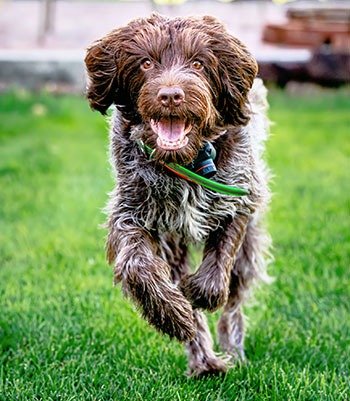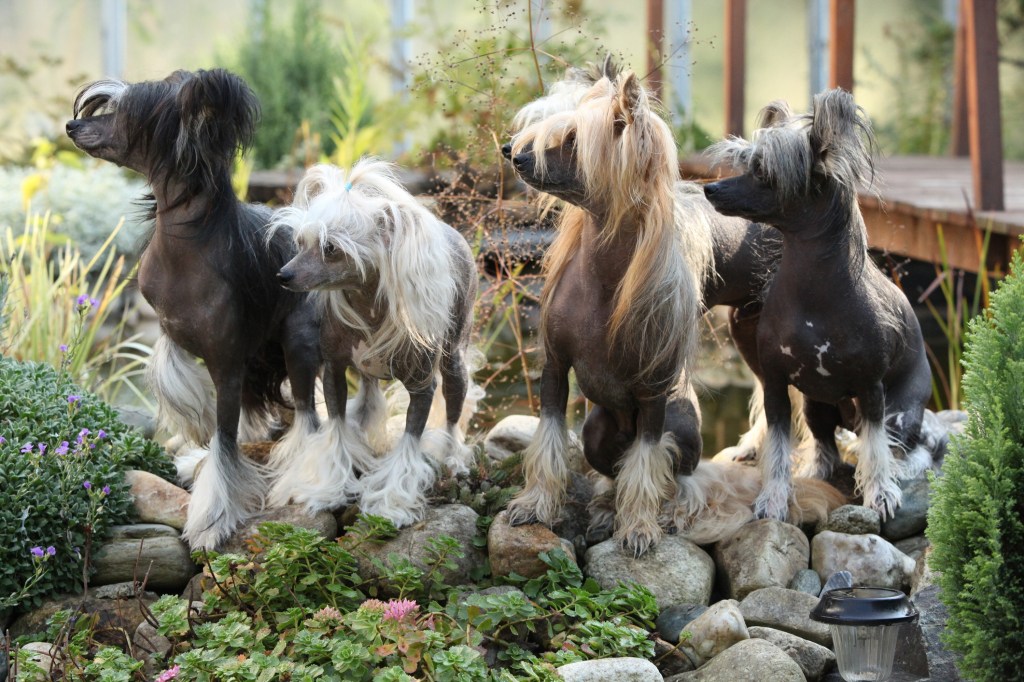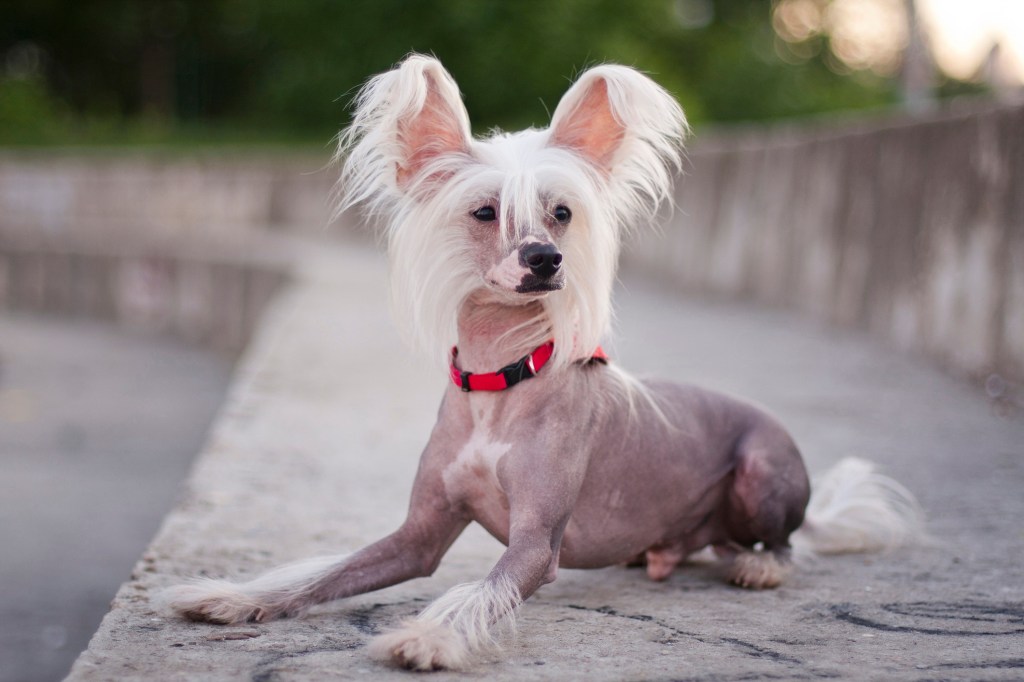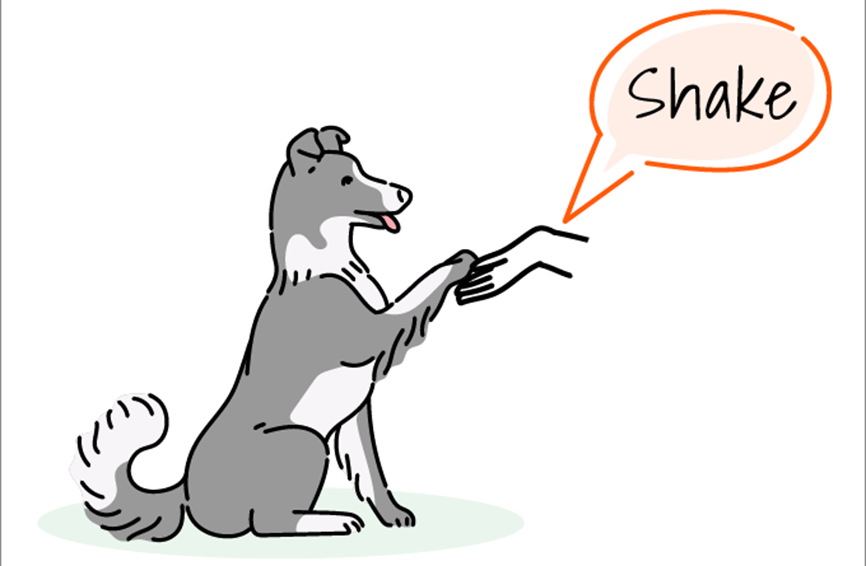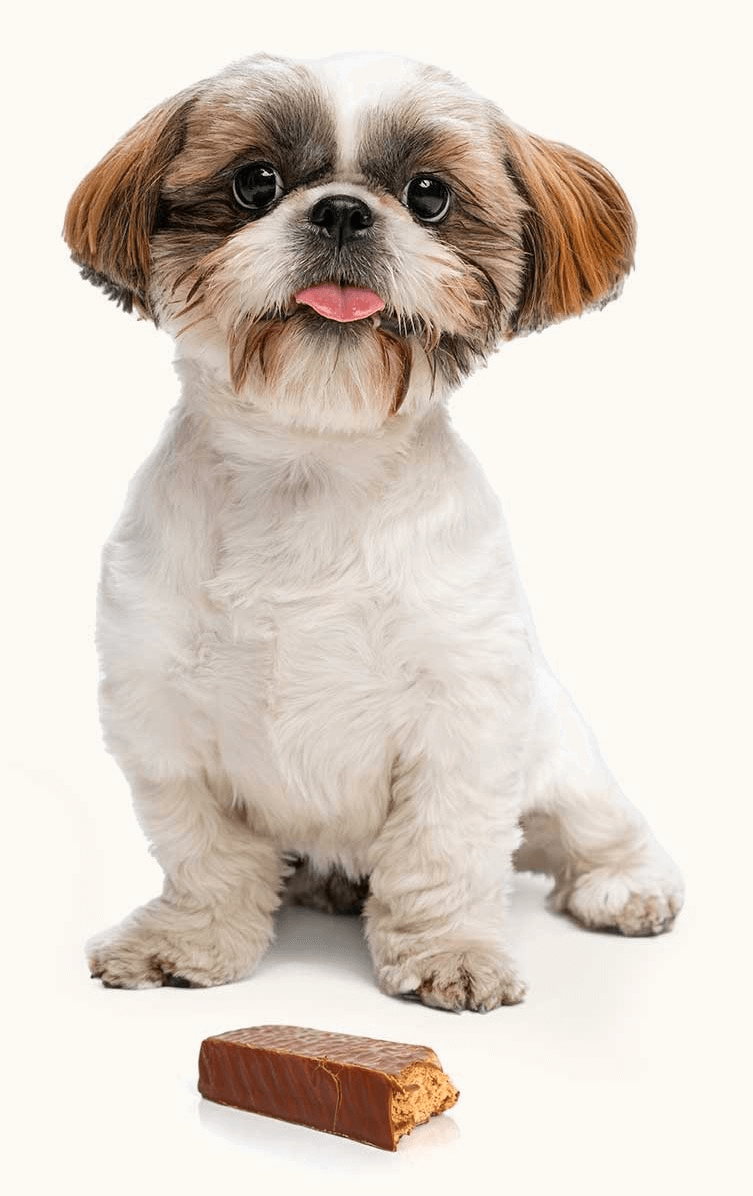Table of Contents
Introduction to Wirehaired Pointing Griffons
The friendly and highly trainable wirehaired pointing griffon is a Sporting Group dog breed that many people love. This is a hardworking dog known as a “supreme gundog” that excels at hunting in the field. It is an outgoing breed that only sheds minimally and has an intentionally unkempt appearance because of its bristly natural coat. If you’re looking for a rugged, unfussy, intelligent dog with a medium size and a lot of love to give, a wirehaired pointing griffon might be the perfect fit for your household.
Read on to learn more about the wirehaired pointing griffon from this Healthy Paws breed guide.
Size of Wirehaired Pointing Griffons
When fully grown, an adult male wirehaired pointing griffon will weigh 50 to 70 pounds and stand 22 to 24 inches tall. An adult female will weigh 30 to 50 pounds and stand 20 to 22 inches tall. These dogs are finished growing by about 13 months of age.
Here’s how big you can expect your wirehaired pointing griffon to get as the dog grows from puppyhood to adulthood. These are average weight ranges for the breed, so expect your male dog to weigh on the high end of the ranges and/or your female dog to weigh on the low end.
| Weight Chart | 3 months | 6 months | 9 months | 13 months |
| Male and female wirehaired pointing griffons | 27 – 29 lbs. | 42 – 49 lbs. | 47 – 55 lbs. | 50 – 59 lbs. |
Characteristics of Wirehaired Pointing Griffons
These medium-sized dogs are happy and loving, typically getting along well with everyone and too gentle to be effective guard dogs. They do well with children but are better with older ones who understand how to handle dogs. Wirehaired pointing griffons also do well with other pets in a house if they are trained and socialized early. They are sensitive dogs that hate being left alone but that do moderately well in both cold and hot weather.
As you get to know a wirehaired pointing griffon’s personality, here’s what you can expect based on his or her breed characteristics:
| Breed Characteristic | Level (High, Medium, Low) |
| Affectionate with People | High |
| Good with Kids | Medium |
| Good with Pets | Medium |
| Need for Exercise | Medium |
| Energy Level | High |
| Intelligence Level | High |
| Able to Be Trained | High |
| Amount of Barking | Medium |
| Amount of Shedding | Low |
History of Wirehaired Pointing Griffons
Like many dog breeds, the wirehaired pointing griffon was originally bred for hunting purposes. The dog’s history dates back to the 1800s when European sportsmen wanted to create hunting dogs with excellent versatility. Dutchman Eduard Korthals is credited with the development of the breed, as he worked to breed a dog that could hunt well on dry land and in water.
The breed was further refined in Germany and France, so there is a debate as to whether the wirehaired pointing griffon should be considered a Dutch or French breed. Historians believe that the dog was created by crossing the otterhound, setters, spaniels, and pointers. The American Kennel Club recognized the wirehaired pointing griffon as a breed in 1887.
Wirehaired Pointing Griffon Standard Information
The general appearance of a wirehaired pointing griffon is medium-sized with a square-shaped head, noble look, and catlike gracefulness. These dogs work equally well pointing in a field as they do retrieving in the water. Their friendly temperament is a defining characteristic, as well as the dog’s hard and coarse coat.
Here is an overview of the breed standard information for wirehaired pointing griffon:
Head:
- Head is in proportion to the overall dog
- Muzzle and head appear square from the side
- Friendly expression
- Large and round eyes
- Medium size ears that are set high
- Brown nose
- Teeth meet in scissors bite
Neck, Topline, Body:
- Long and slightly arched neck
- Chest descends to the level of the elbow
- Tail extends from the back in a continuation of the topline
Forequarters:
- Shoulders are long and well laid back
- Dewclaws should be removed
- Feet are found and firm
- Pads are thick
Hindquarters:
- Thighs are long and well-muscled
- Legs are vertical with hocks neither out nor in
- Feet are the same as in the front
Coat:
- Outer coat is medium length, straight, and wiry
- Undercoat shifts in abundance seasonally and is lighter in color
- Somewhat untidy appearance
- Trimming is only allowed around the ears, top of head, cheeks, and feet
Color:
- Steel gray with brown markings
- Chestnut brown or roan, white, and brown
- White and orange are acceptable
- No strictly black coat
Gait:
- Medium-speed dog with coordination between front and rear legs
- Smooth and powerful as the dog coves ground
Caring for Wirehaired Pointing Griffons
Griffons have lots of energy and need daily exercise, preferably with a yard to run around in off-leash. They are not aggressive dogs, but they can be nervous around new people.
Here are some general tips for taking the best care of a wirehaired pointing griffon:
Best Living Environments:
- Better for country living than city living
- Apartments are not ideal
- Not left alone for long periods in a yard or kennel
Type of Exercise:
- At least 30 minutes of off-leash time per day
- Running around a yard
- Runs with family members
- Swimming
- Hunting
Mental Enrichment:
- Quality time with family
- Games and toys in a backyard
Training Strategies:
- Eager to please and very intelligent dogs
- Generally easy to train
- Prone to separation anxiety
- Enjoy having a job to do
Grooming Tips:
- Very low shedding and good for people with allergies
- Brush weekly
- Only bathe when truly necessary
- Keep the ears clean and dry after swimming
- Trim nails monthly if not worn down naturally
Common Health Problems of Wirehaired Pointing Griffons
The average life expectancy of a wirehaired pointing griffon is 12 to 15 years. You can reduce your chances of having an unhealthy dog by choosing a reputable breeder that screens for genetic conditions. However, this is a generally healthy dog that does not encounter as many inheritable conditions as some other breeds. When a health issue arises, the best way to be prepared is by having a Healthy Paws pet insurance plan already in place.
These are some of the most common health issues that arise with wirehaired pointing griffons:
- Hip dysplasia (treated by physical therapy or surgery)
- Elbow dysplasia
- Progressive retinal atrophy (vision loss and blindness)
- Cataracts (often requires surgery)
- Glaucoma
- Entropion (eyelid abnormality)
- Gastric dilatation volvulus (bloat)
- Skin allergies
Diet and Nutrition for Wirehaired Pointing Griffons
Adult wirehaired pointing griffons need about 2 to 2.5 cups of high-quality dry dog food per day. However, the exact amount of food your dog needs will vary, depending on the caloric density of the food. Your dog’s total daily food intake should be divided into morning and evening meals. Consider using a slow-feeder bowl for your dog to prevent bloat from eating too quickly.
Where to Adopt or Purchase Wirehaired Pointing Griffons
If you want to bring a purebred wirehaired pointing griffon into your life, the American Wirehaired Pointing Griffon Association is a good place to start. This is the national breed club for the breed and a resource for responsible breeders and rescuing a dog in need of a home. The American Wirehaired Pointing Griffon Association Rescue is dedicated to finding dogs of this breed loving families regardless of their age or physical condition.
Related Breeds
Do you like what you’ve been reading so far about the wirehaired pointing griffon dog breed? If so, there are other similar breeds that might catch your attention too. It’s responsible to do your research about potential dogs to adopt or purchase before making the life-changing decision to take care of a pet.
Here are some more breeds to consider:
- Pudelpointer
- German wirehaired pointer
- Slovakian wirehaired pointer
- Chesapeake Bay retriever
Pet Insurance for Wirehaired Pointing Griffons
Whether your wirehaired pointing griffon is a puppy, a senior dog, or somewhere in between, pet insurance is a wise choice. Puppies just eight weeks old benefit from insurance because they are so delicate and susceptible to everything from life-threatening parvo to bee stings. If you enroll your dog before the age of six, hip dysplasia coverage is included at no extra cost. When your wirehaired pointing griffon gets older, our pet insurance coverage can help you save hundreds or thousands of dollars on veterinary care for hereditary and congenital conditions that begin to cause symptoms in your dog.
With our easy-to-understand insurance plan, you can take your wirehaired pointing griffon to any licensed vet you trust and submit vet bills on our website or through our mobile app. We process most claims within just two days, so you can get reimbursed quickly and spend more time caring for your sick or injured pet.
Get your wirehaired pointing griffon insurance quote today and have peace of mind every day!


